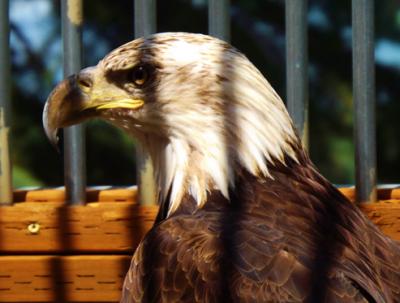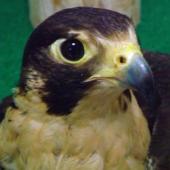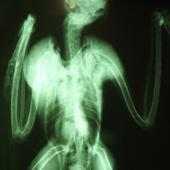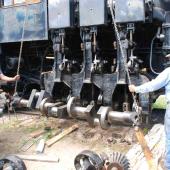Montana Raptor Conservation Center
For The Love Of...
Background:
Montana Raptor Conservation Center was founded in 1988 in response to the rapid development of Montana and the resulting conflicts between humans and birds of prey. Through the efforts of the small but dedicated staff and a wealth of devoted volunteers, MRCC fills a vital role in promoting a safe, healthy cohabitation between humans and wildlife. MRCC receives no state or federal funding and is funded entirely by grants, fundraisers, sales of specialty license plates, and donations from the community extending from veterinary services to the compound on which its facilities are housed.
Mission:
Through the rehabilitation and release of injured birds of prey, public education, and research, their mission is to conserve and restore raptors.

Services:
Nestled in the Bridger foothills near Bozeman, MRCC hosts eight permanent residents, including Nigel, a 3.5 oz. Northern Saw-Whet owl, and a four-year-old bald eagle named 99. These birds, either permanently injured or imprinted by humans, are unable to survive in the wild and are thus ambassadors in MRCC’s public education program. Additionally, MRCC has the rehabilitation facilities to care for up to 35 more birds at a time, including an intensive care unit, exam room, x-ray facilities, and a large flight barn, where larger hawks and eagles exercise and are evaluated for flight. MRCC cares for, on average, 150 injured or ill raptors every year with the goal of releasing them back to their natural environments. These injuries range from minor sprains and head trauma to poisonings and gunshots.
Equally as important as the immediate care of injured birds, MRCC strives to create a better future for all birds of prey in the greater Montana area. MRCC’s educational out-reach team has been active in Montana since 1992. This hands-on program reaches thousands of people annually from preschool through adult age groups, educators and ambassador raptors. In addition, MRCC staff and volunteers collect data, such as the history of injury, blood work, and testing for toxins. When funding allows, the Center tracks survival rates of released birds by radio telemetry. This research expands knowledge about how we as humans affect these birds, gaining insight into how we can reduce conflicts between humans and raptors as we all live together and share this incredible place that is Montana.




Contact:
To learn about how to help out, and what to do if an injured raptor is found, visit MRCC online at www.montanaraptor.org, or contact them at [email protected] or 406-585-1211.












Leave a Comment Here